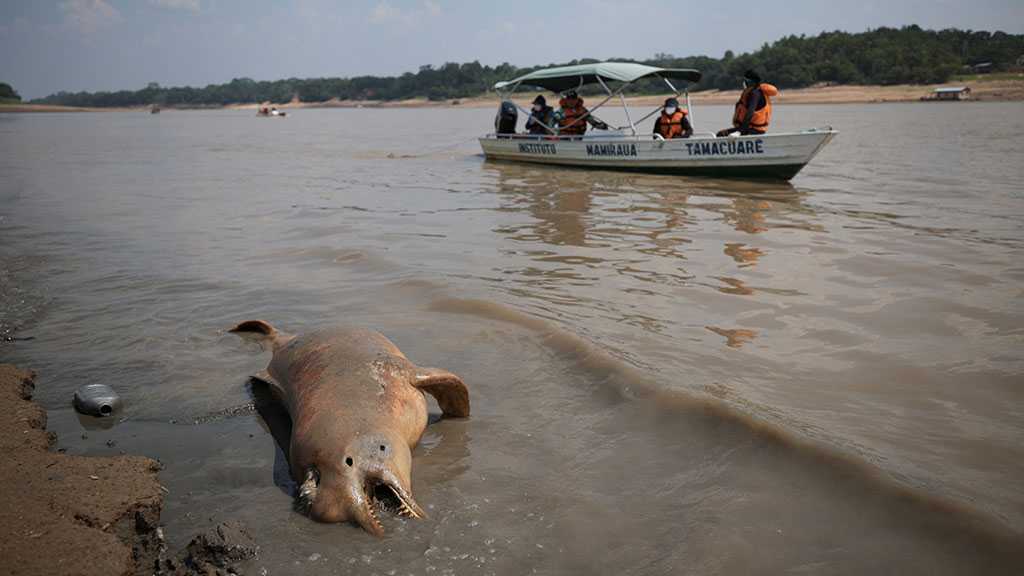
Deaths of 120 Amazon Dolphins Linked to Severe Drought, High Temperatures

By Staff, Agencies
The carcasses of 120 river dolphins have been found floating in a tributary of the Amazon River in Brazil over the last week in circumstances that experts suspect were caused by severe drought and heat.
The Mamiraua Institute, a research group at Brazil’s Ministry of Science, Technology and Innovation, said two more dead dolphins were found on Monday in the region around Tefe Lake.
Experts believe high water temperatures are the most likely cause of the deaths as temperatures since last week have exceeded 39C [102F] in the Tefe Lake region.
Thousands of fish have also died, local media reported.
“We have documented 120 carcasses in the last week,” said Miriam Marmontel, a researcher at the Mamiraua Institute.
Amazon river dolphins, many of a striking pink colour, are a unique freshwater species found only in the rivers of South America and are one of a handful of freshwater dolphin species left in the world.
Slow reproductive cycles make their populations especially vulnerable to threats.
Marmontel said roughly eight of every 10 carcasses being found are pink dolphins, which are called “boto” in Brazil, and could represent 10 percent of their estimated population in Lake Tefe.
“Ten percent is a very high percentage of loss, and the possibility that it will increase could threaten the survival of the species in Lake Tefe,” Marmontel said.
The boto and the grey river dolphin called the “tucuxi” are on the International Union for Conservation of Nature’s red list of threatened species.
Brazil’s Chico Mendes Institute for Biodiversity Conservation has rushed veterinarians and aquatic mammal experts to rescue dolphins still alive in the lake.
The scientists do not know with certainty that drought and heat are to blame for the spike in dolphin mortality. They are working to rule out other causes, such as a bacterial infection that could have killed the dolphins.
But at least 70 of the carcasses surfaced late last week when the temperature of Lake Tefe’s water reached 39C, more than 10 degrees higher than the average for this time of the year.
The water temperature declined for a few days but rose again on Sunday to 37C [99 F], worried experts said.
Environmental activists have blamed the unusually hot conditions on climate change, which makes droughts and heat waves more likely and severe.
Ayan Fleischmann, the geospatial coordinator at the Mamiraua Institute, said the drought has had a significant impact on the riverside communities in the Amazon region.
“Many communities are becoming isolated, without access to good quality water, without access to the river, which is their main means of transportation,” he said.
Nicson Marreira, mayor of Tefe, a city of 60,000 residents, said his government was unable to deliver food directly to some isolated communities because the rivers are dry.
Comments
- Related News



